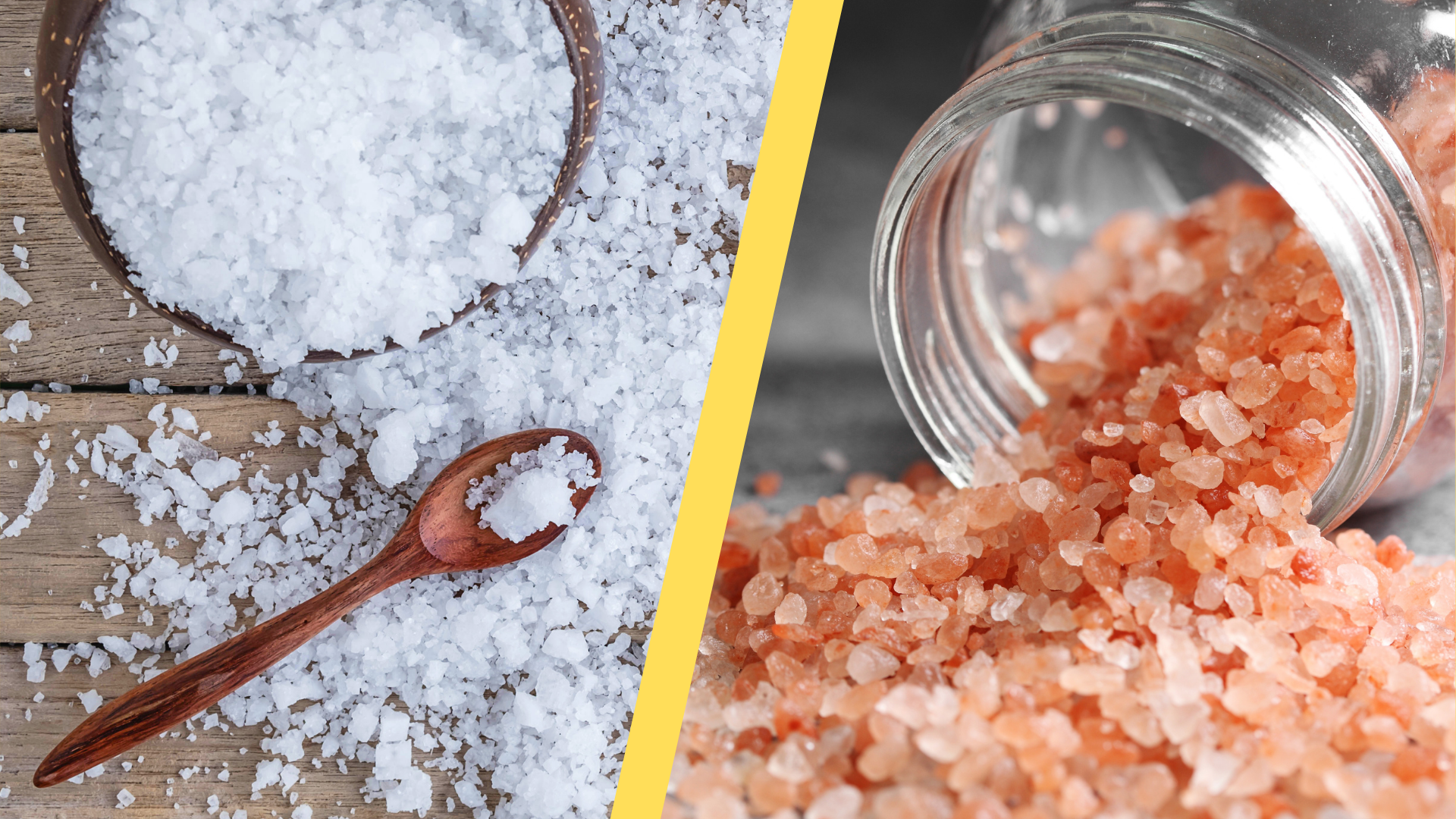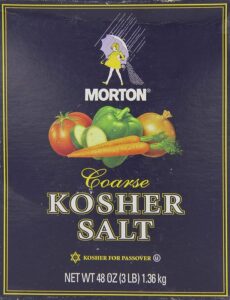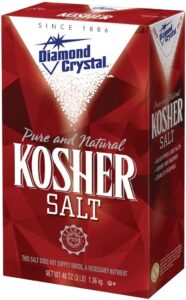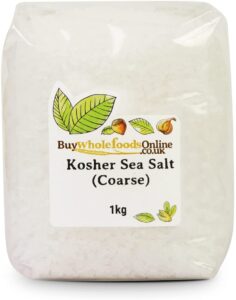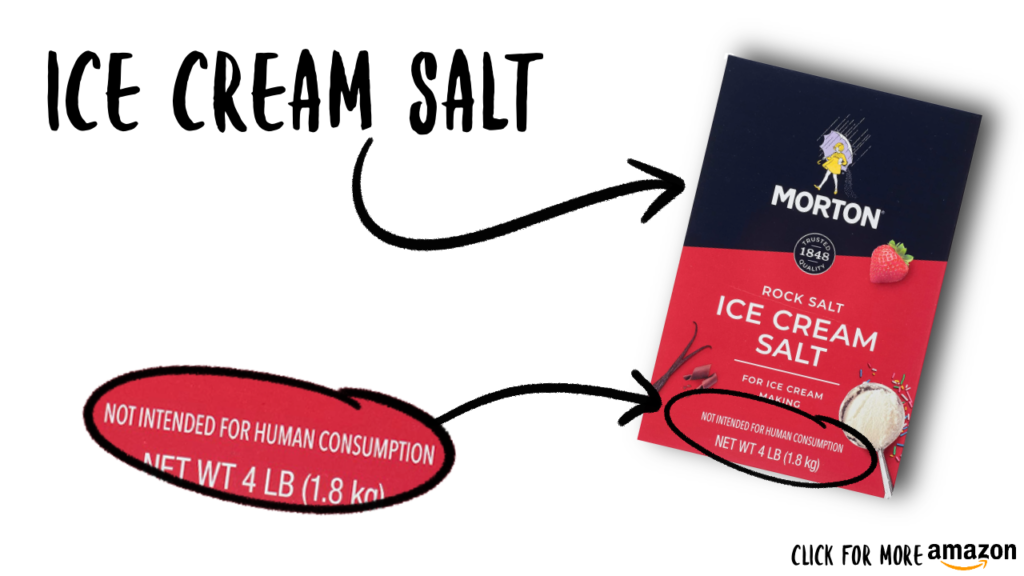Some of the links on this page are affiliate links, which means that Buzzy Kitchen earns commission from purchases made – at absolutely no extra cost to you. Thank you so much for supporting Buzzy Kitchen!
With so many different types and kinds of salt on the market, it’s easy to get confused. Some of them look the same, have similar names, and could essentially be exactly the same. But are sea salt and rock salt the same?
It would be easy to get these two types of salt confused. After all, they, again, look the same, especially in terms of grain size and coarseness. They almost sound as if they could be the same thing, too. However, as the name suggests, one of the salts comes from the sea, and the other is mined in rocks underground.
Because of this, the two salts are quite different…
And one could even make you quite unwell.
It’s time to investigate.
What is Sea Salt?
Sea salt, as the name suggests, comes from the sea. When seawater evaporates, a white residue is left behind. That residue is essentially mined and then refined a little before being packaged and sold to you, the customer.
What is Rock Salt?
Rock salt comes from the sea, too, but it is mined from underground, in deep rocks.
Table salt is made from rock salt, but it is more refined and granulated until it becomes a very fine powder.
One example of rock salt is Himalayan pink salt, which has grown in popularity over recent years.
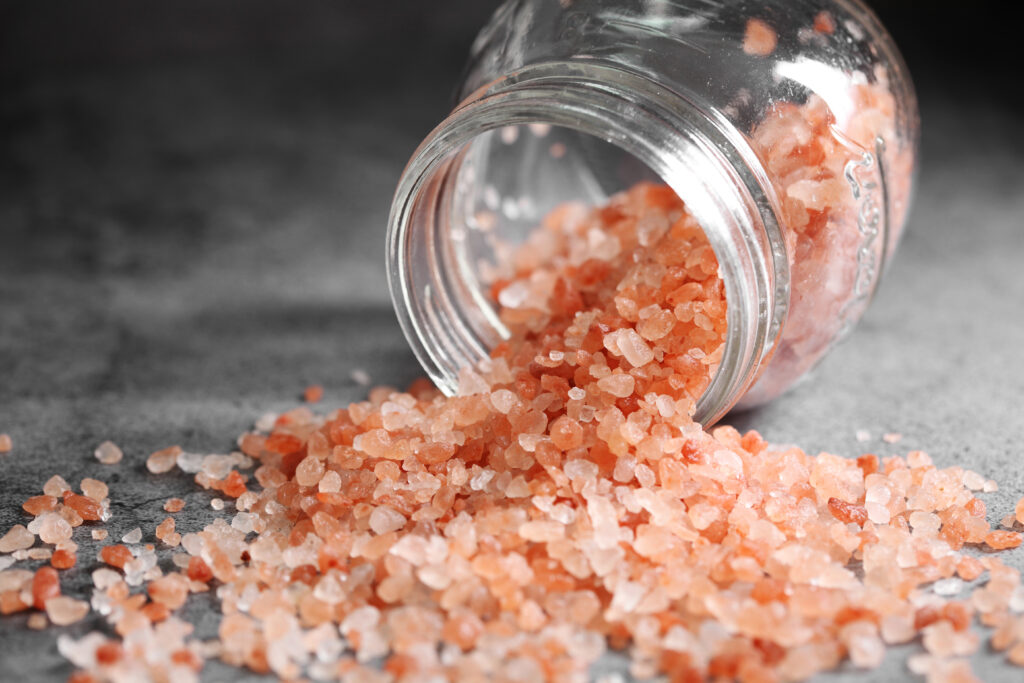
Photo by seksanwangjaisuk565138 / Vecteezy
How Are Sea Salt and Rock Salt Different?
As well as being mined in different ways, sea salt and rock salt have differences in terms of taste, flavour, impurities, and even behaviour.
Although similar in a few ways, rock salt has a much bolder, saltier, and stronger flavour than its sea counterpart. You will want to add rock salt slowly to a dish, tasting as you go. You may also wish to use slightly less rock salt than you would sea salt, because of the bolder flavour.
Sea salt is known as a “finishing salt”, which means that it is often added to finish a meal – a garnish, or last-minute seasoning.
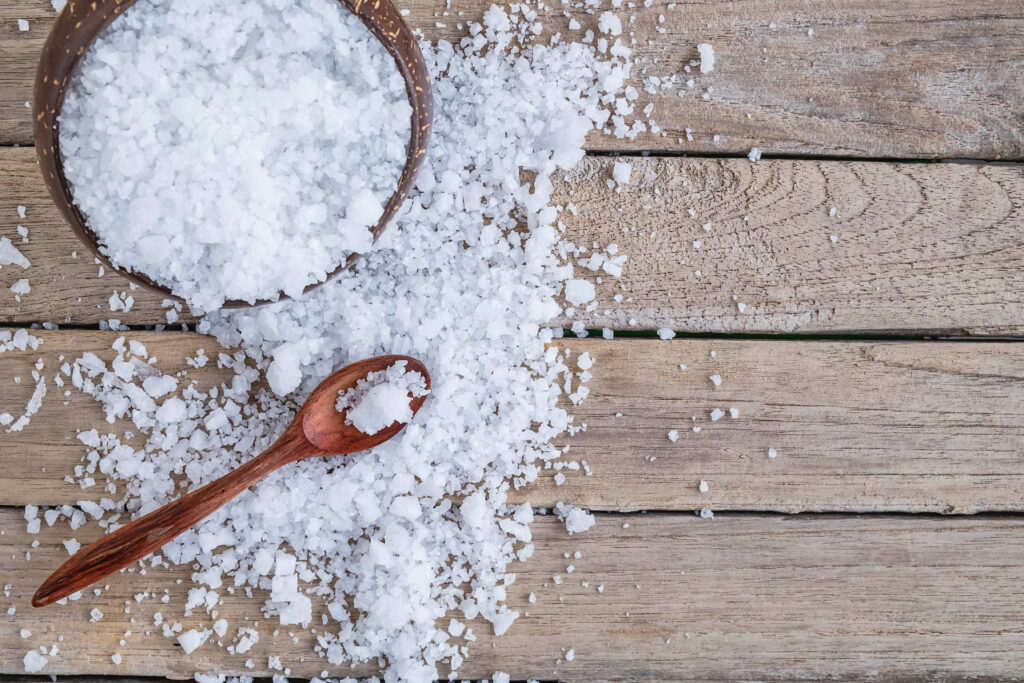
Photo by maxskyohm27626627 / Vecteezy
Rock salt is generally called upon when a large surface area of salt is needed, such as when making ice cream. Because of the high number of impurities (additional minerals and vitamins), some types of rock salt are not safe to eat.
You shouldn’t eat rock salt unless the packaging specifically states that it is safe to eat.
Sea salt is the more expensive of the two, but that’s mostly because rock salt is often used for things such as gritting roads, or making ice cream. With the latter, the ice is simply used to bring the temperature down of the creamy mix. It doesn’t actually touch the food product itself.
Ice cream salt, which is a close cousin of rock salt, is usually labelled as not safe to eat.
Can I Substitute Sea Salt for Rock Salt? (And Vice Versa?)
If you are going to substitute sea salt for rock salt, make sure the rock salt you’re planning to cook or season with is actually safe and meant for human consumption.
You can buy rock salt that is considered safe to eat, known as food grade, but it is commonly used as a finishing salt rather than a cooking salt. Other types of edible rock salt are used to make brine, which is frequently used to can foods, such as tuna, sweetcorn, and hot dogs.
Best Sea Salt Substitutions
You can use a wide variety of other salt types if you need sea salt but don’t have it in your kitchen.
Kosher salt is close in terms of grain size and texture, and it dissolves slowly, just as sea salt does, which makes it great for finishing a dish and adding a little crunch.
Rock salt can be used. The grains are large and coarse, just as with sea salt and kosher salt. You must ensure that the rock salt is safe for human consumption before adding it to a dish, however. Otherwise, you might find yourself rather unwell.
Table salt is another type of salt you can use instead of sea salt, but the grains of table salt, also known as refined or regular salt, are typically much smaller. You will need less table salt than you will sea salt – so it’s best to add a little salt, then taste, then add a little more if you need to.
Best Rock Salt Substitutions
If you need rock salt to finish or season a dish, you could use sea salt, kosher salt, or even table salt.
For ice cream making purposes, you will want to use salt that covers a wide surface area – large coarse salt. This can include kosher salt, sea salt, and even table salt.
Ice cream salt is coarse and large for this reason, but is typically more expensive than other types.
